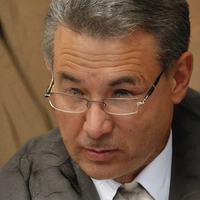
Think the US or UK leads the world in math scores? Not even close. If you look at the results from global exams like PISA and International Math Olympiad, East Asian countries have been owning the leaderboard year after year. We're talking about countries like China (especially the provinces of Shanghai and Beijing), Singapore, South Korea, and Japan. Their students regularly pull off results that make the rest of us look like we're counting on our fingers.
But it’s not just about bragging rights. These rankings tell you a lot about how those countries treat math—it's a serious competitive sport. Schools there start hammering home math basics before kids are out of kindergarten, and the system pretty much expects everyone to get those tough questions right. No surprise: parents, coaches, and after-school academies are all part of the math machine. People joke about 'Tiger parents,' but those late-night math drills are real for a lot of these kids.
If you're prepping for a competitive math exam—say, the SAT, GRE, or an Olympiad—paying attention to what’s happening in these top countries is smart. Their study techniques, problem-solving routines, and even mindset hacks could be the edge you need. So, what can you steal from their playbook? Read on.
- Reality Check: How Countries Are Ranked in Math
- Why East Asia Keeps Dominating
- What the Top Performers Are Doing Differently
- Inside the Training—A Look at Competitive Math Prep
- Not Just for Geniuses: Math Education Elsewhere
- How Students Can Use Global Strategies to Win
Reality Check: How Countries Are Ranked in Math
Wondering how they even figure out which top math country comes out on top? It’s not guesswork, it’s all about the numbers pulled from a few global, super-competitive international exams. The most famous is the PISA (Programme for International Student Assessment), run every three years by the OECD. Then you've got the International Mathematical Olympiad (IMO) for the biggest math nerds in high school. And for younger students, the TIMSS (Trends in International Mathematics and Science Study) keeps countries honest about their early math skills.
PISA matters a ton because it tests 15-year-olds on real-life math problems, not just textbook stuff. Countries freak out about PISA rankings—you’ll hear about the latest results on the news in Asia or Europe every three years. Here’s some cold, hard data from the 2022 PISA math exam:
| Country/Region | Average Math Score |
|---|---|
| Singapore | 575 |
| Macau (China) | 552 |
| Hong Kong (China) | 551 |
| Japan | 536 |
| South Korea | 527 |
| United States | 478 |
So yeah, Asia keeps crushing these rankings. But the International Math Olympiad plays out a bit differently. Here, each country sends its best six students—think of it as the Olympics, but for math brains. Over the past decade, China has won gold almost every year, with the US, Russia, and South Korea often chasing hard. The competition is legendary for its tough, brain-melting questions.
But rankings aren’t just about test scores. These results end up shaping school policies, exam formats, and even the way students are taught. Governments want to climb those charts, so they tweak curriculums and pour resources into coaching the next generation of competitive math stars. This makes the rankings a big deal if you’re serious about math or education.
Why East Asia Keeps Dominating
If you’ve seen the math ranking charts from the last decade, East Asia is always at the top. Singapore, China (especially Shanghai and Beijing), South Korea, and Japan grab gold on the tests that matter—like PISA, TIMSS, and the International Math Olympiad. It’s not just a fluke; there’s a method to the madness.
First up, the school system. East Asian countries make math the core subject from the very start. Kids spend way more classroom hours on math than most other places. According to OECD, students in Shanghai spend almost double the hours on math per week compared to their US peers. And it shows—recent PISA scores put Singapore and Macao at the top, with Shanghai’s 15-year-olds hitting the highest average math scores ever recorded (613 out of 800).
| Country/Region | PISA 2022 Math Score |
|---|---|
| Singapore | 575 |
| Macao | 552 |
| Hong Kong | 540 |
| Shanghai (2018) | 591 |
| OECD Average | 472 |
But the pressure isn’t just academic. The entire culture leans into math success: there’s a kind of national pride in being good at numbers. Parents invest in private tutoring or after-school math academies (“cram schools”). These can take up evenings and weekends, basically turning math into a competitive sport. No wonder top math country titles keep cycling through this part of the world.
It also comes down to how math is taught. Instead of rote memorization, teachers focus on deep understanding and problem-solving. For example, the “Singapore Math” method is now a global buzzword because it’s all about getting to the ‘why’ behind every step.
If you’re aiming for international competitive math exams, it’s worth checking out the math textbooks and sample tests from these countries. You’ll notice more open-ended problems, multi-step puzzles, and lots of logic mixed in. The approach is less about copying formulas and more about prediction, pattern-finding, and critical thinking.
Bottom line? East Asia’s domination in math isn't by accident. It’s the result of an all-in effort from schools, families, and even pop culture. Anyone looking to climb the international exams ladder has some serious lessons to pick up from the East.
What the Top Performers Are Doing Differently
Alright, so why do top math countries like Singapore, China, and South Korea keep smashing records? They aren’t just relying on natural talent or sending their smartest kids to competitions. Every part of their system is designed to crank out high-level math thinkers.
First off, they start early. In Singapore, math lessons often begin before formal school starts. Throughout the early years, basic concepts get hammered home until they’re second nature. By the time kids tackle harder algebra or geometry, they aren’t struggling—they’re ready to sprint.
The next thing: they go deep, not wide. Instead of racing through a hundred topics, schools in places like Shanghai spend more time on fewer concepts. They make sure students absolutely nail each topic before moving to the next one. This is known as the “mastery approach.” That means fewer gaps and more confidence.
- Practice makes perfect: Students in these countries spend way more hours solving both easy and super challenging problems. It’s not rare for top students to practice math as much as athletes train for sports.
- Math teachers are specialists: In Japan and South Korea, most middle and high school math teachers only teach math. They’re real experts, not just teaching because they have to fill a slot.
- Competitive spirit: There’s a huge culture of math competitions and Olympiads. Even younger kids try out for school teams or national contests, which keeps them sharp.
- Support outside school: A ton of students go to private after-school academies (called “hagwons” in Korea or “cram schools” in Japan), which double down on advanced topics and tricky questions that don’t always get covered at school.
It’s not just hype either. Check out the 2022 PISA scores, a big international benchmark:
| Country | Average Math Score |
|---|---|
| Singapore | 575 |
| Macau (China) | 558 |
| Hong Kong (China) | 551 |
| Japan | 527 |
| South Korea | 526 |
Let’s face it, these numbers crush the scores from places like the US or Europe. It’s not a fluke—it’s the result of a whole system focused on building serious math skills, with a special emphasis on international competitive exams.
If you want to compete with the best (or just catch up), adopting even one or two of these habits can help. It isn’t magic—it’s a process anyone can tap into with the right system and effort.

Inside the Training—A Look at Competitive Math Prep
If you’ve ever wondered how students from places like Singapore, China, or South Korea crush those top math country rankings, the secret is out: it’s a relentless, hands-on grind. Competitive math prep in these places goes way beyond typical schoolwork. Kids hit after-school academies—what locals in South Korea call “hagwons” or Singaporeans call "tuition centres"—as young as six. Some end up solving hundreds of problems a week, all before dinner.
There’s serious structure behind this competitive math culture. Here’s what actually happens during a week of training for big league contests like the International Math Olympiad (IMO):
- Daily Problem Drills: High-level students tackle fresh problems every day. Some schools hand out specialized problem sets covering Olympiad-style geometry, algebra, and number theory.
- Mock Exams: Regular practice tests mimic the real deal—timed, with tricky question wording just like on league tables such as PISA or IMO.
- Advanced Workshops: There’s often extra coaching, where previous medalists walk students through famous problems and clever shortcuts. In China, some teams even have full-time staff dedicated to math contest prep.
- Peer Groups: Practice isn’t solo. Study squads review each other’s solutions, swap tips, and challenge each other with homemade problems.
- Analyzing Mistakes: Students don’t just move on after a wrong answer. They dissect mistakes to make sure those errors never happen again.
To get a sense of just how much work is packed in, here’s a rough breakdown from a few well-known prep programs:
| Country | Weekly Training (Hours) | Common Age Started |
|---|---|---|
| Singapore | 10–15 | 7–8 |
| South Korea | 12–20 | 6–7 |
| China (Beijing/Shanghai) | 15–25 | 6–7 |
This isn’t just about brute force or memorizing formulas. Students learn to spot patterns, break down tough word problems, and connect concepts in creative ways. It’s why a student from Shanghai can look at a math puzzle that freezes an SAT crowd and just grin—it’s not magic, it’s pure training.
The bottom line? If you want to get good at math for international exams, start thinking like these kids: steady practice, deep analysis of mistakes, and a dash of group competition. There’s no shortcut, but their method proves that anyone can get better—if you’re ready to put in the hours.
Not Just for Geniuses: Math Education Elsewhere
If you think only math whizzes from Singapore or China smash the top math country lists, think again. Plenty of countries put their own spin on how they teach the subject. Sure, they might not always be sitting on the very top, but they’re making steady gains and showing there’s more than one way to get good at math.
Take Finland, for example. Even though Finnish students don’t train for endless competitions, the country’s math ranking is consistently solid on the PISA and other global tests. What’s their secret? Their schools focus on making sure every student understands the material—no one's left to sink or swim. Plus, teachers in Finland have master’s degrees and a lot of trust from parents, which makes a huge difference.
Over in Canada, you see another approach. Teachers stick to real-world problems and group activities. They know that not every kid dreams of solving advanced calculus problems, so Canadian lessons try to connect math to everyday life. It’s less about intense drills and more about getting students to actually like math.
Meanwhile, India has a different vibe altogether. For students aiming at competitive exams like the IIT-JEE, coaching centers crank up the pressure. But in regular schools, the focus is more traditional, with lots of homework and tough exams. The gap gets huge later: a handful of students get top global scores, but the average can be pretty varied.
Here’s a snapshot of how three countries differ in their math approach:
| Country | Main Strategy | Average PISA Rank (Math) |
|---|---|---|
| Finland | Equality & Understanding | Top 15 |
| Canada | Real-World Application | Top 15 |
| India | Exam-Oriented | Varies Widely |
The bottom line? Math success isn’t just for kids who live and breathe equations. If your school or country isn’t topping those international exams, you can still build strong skills with the right mix of support, good teachers, and study habits. It’s more doable than it looks—and way more diverse than those intimidating global rankings make it seem.
How Students Can Use Global Strategies to Win
Want to land near the top in competitive math? Start thinking the way top-ranked students do. Kids from Singapore and China don’t just rely on classroom lessons. They go way beyond, using extra workbooks, joining math circles, and even getting coached for global contests.
Singapore’s curriculum is famous for its “model method,” where students draw diagrams to solve word puzzles and tricky algebra. According to OECD data, about 70% of Singaporean 15-year-olds scored above the global math average in 2022. If you’re tackling hard questions, try sketching out problems the way these students do—it works for visualizing tough stuff.
Chinese students crush the basics before moving to advanced topics. Time and again, Olympiad winners say drilling problem types until they’re automatic is key. As Dr. Terry Tao, math prodigy and professor at UCLA, once said:
“Solid basics are like the foundation of a house. The world’s best competitors master the fundamentals until complex problems seem routine.”
Want to copy their playbook? Try these international math strategies:
- Daily Practice: Short, focused problem sets beat cramming. In Japan, many students do 30 minutes of math every day.
- Learn From Mistakes: South Korean math clubs have students present errors and discuss them openly. Make a “mistake log” so patterns don’t trip you up next time.
- Join a Community: Online forums like Art of Problem Solving or school math clubs can help boost your skills and keep you motivated.
- Mock Contests: Simulate a real test environment by timing yourself. It’s a trick used by top math ranking schools globally to break test anxiety.
- Focus on Concepts, Not Memorization: Singaporeans use concrete examples before moving to abstract ideas. Always ask yourself “why” behind a method.
Check out how the top performers stack up on the math front:
| Country | PISA Math Score (2022) | Hours Spent on Math/Week |
|---|---|---|
| Singapore | 575 | 8.0 |
| China (Beijing-Shanghai) | 591 | 7.2 |
| United States | 478 | 4.5 |
Looking at those numbers, it’s pretty clear: practice matters a lot. If you want to step up your skills and maybe even boost your top math country pride, borrowing these strategies is a solid move. Math stardom isn’t just for a few brainiacs—it’s about finding what works and sticking with it.
More Articles

Best Websites for Competitive Exams: Comparing Online Platforms for Success
What online platform actually helps you crack competitive exams? This guide compares sites, tools, and study methods that really work for motivated test-takers.


